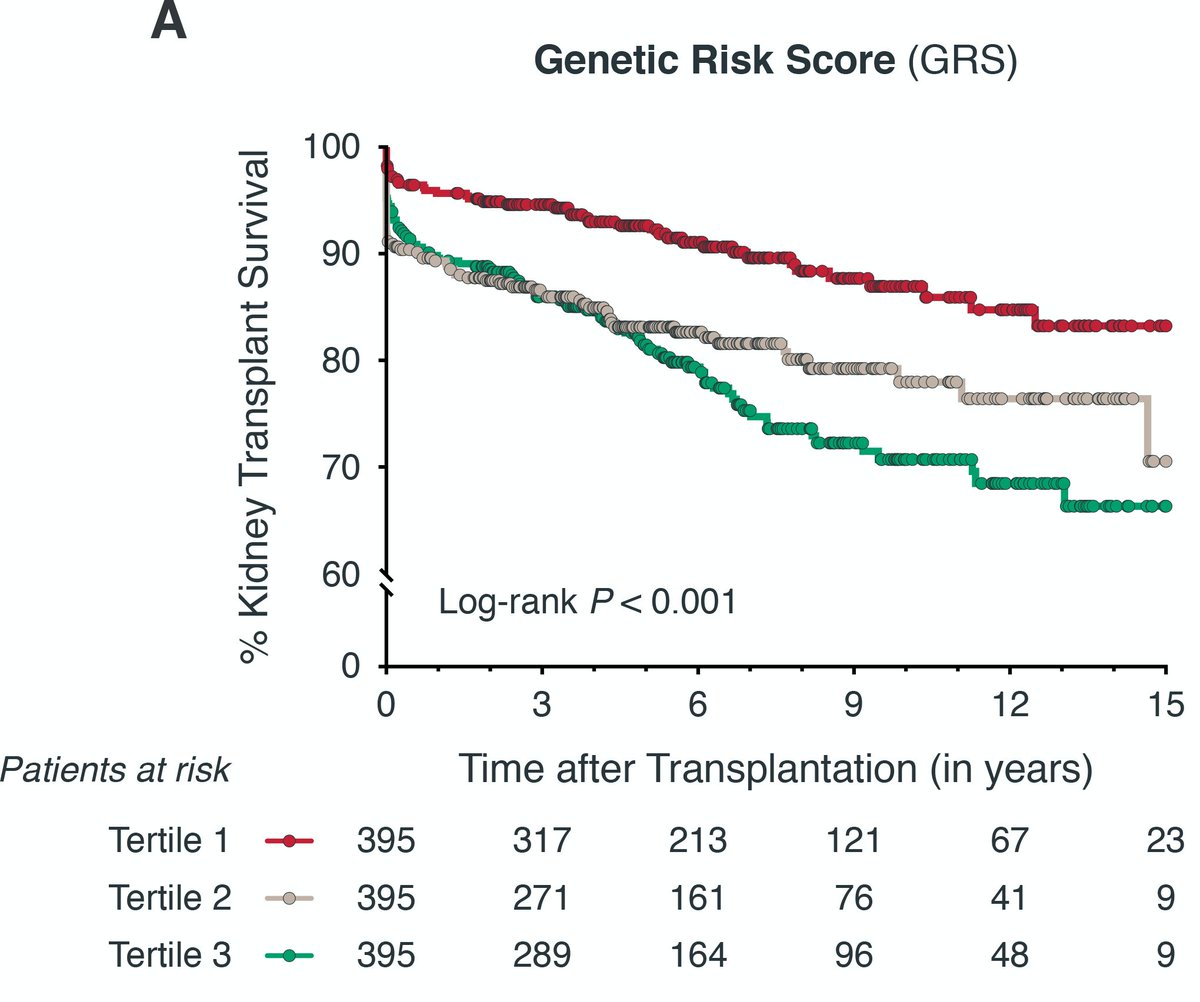A new milestone 🎉: my 3⃣0⃣th publication!
Published @amjtransplant, entitled:
"An interleukin 6-based genetic risk score strengthened with interleukin 10 polymorphisms associated with long-term #kidney allograft outcomes."
➡️pubmed.ncbi.nlm.nih.gov/36453708/
Time for a #tweetorial 🧵👇
Published @amjtransplant, entitled:
"An interleukin 6-based genetic risk score strengthened with interleukin 10 polymorphisms associated with long-term #kidney allograft outcomes."
➡️pubmed.ncbi.nlm.nih.gov/36453708/
Time for a #tweetorial 🧵👇

1.) Of all #kidney transplants, half are still lost in the first decade after #transplantation.
Using #genetics 🧬, we probed if interleukin 6 (IL-6) could be a target in kidney #transplantation to improve graft survival & if a genetic risk score could improve prognostication.
Using #genetics 🧬, we probed if interleukin 6 (IL-6) could be a target in kidney #transplantation to improve graft survival & if a genetic risk score could improve prognostication.
2.) Together with @marigaya, @VojtechPetr and colleagues from the @GTCumcg & @researchumcg, we studied the impact of IL6, IL6R, IL10, IL10RA & IL10RB 🧬variants on late graft loss by analyzing both recipient and donor DNA of >1,200 #kidney transplant‐pairs.
@YAGroningen @umcg

@YAGroningen @umcg


3.) Kaplan–Meier curves showed that the CC-genotype of the IL6🧬(rs1800795) in donor kidneys is associated with a⬇️risk of graft loss.
Subgroup analyses for donor sex showed that the association was only found in♀️donors & remained significant after adjustment for co-variates.

Subgroup analyses for donor sex showed that the association was only found in♀️donors & remained significant after adjustment for co-variates.


4.) Next, we studied if donor-recipient mismatches for the IL6 🧬were linked to the risk of graft loss.
Donor-recipient pairs were divided in 3⃣ groups:
- No CC-genotype in the donor/recipient
- CC-genotype in the donor OR recipient
- CC-genotype in both the donor AND recipient
Donor-recipient pairs were divided in 3⃣ groups:
- No CC-genotype in the donor/recipient
- CC-genotype in the donor OR recipient
- CC-genotype in both the donor AND recipient
5.) Kaplan–Meier analysis revealed a significant difference in death-censored graft survival among the 3⃣ groups.
Donor-recipient pairs with a combined CC-genotype of the IL6🧬(rs1800795) had the ⬆️15-year graft survival
Subgroup analysis for sex did not change these results!
Donor-recipient pairs with a combined CC-genotype of the IL6🧬(rs1800795) had the ⬆️15-year graft survival
Subgroup analysis for sex did not change these results!

6.) There was🚫association between the IL6R, IL10, IL10RA, and IL10RB🧬variants in the donor or recipient with 1⃣5⃣ year death-censored graft survival after #kidney #transplantation.
7.) To strengthen the IL-6 association with graft loss, we developed a genetic risk score (GRS) fortifying the IL-6 🧬variant with SNPs in IL6R, IL10, IL10RA, & IL10RB.
So the GRS looks at the presence of 8 polymorphisms across 5 genes in the kidney transplant donor & recipient.
So the GRS looks at the presence of 8 polymorphisms across 5 genes in the kidney transplant donor & recipient.
8.) The GRS was associated with death-censored graft loss.
Upon dividing the GRS in tertiles, the Kaplan–Meier curves showed⬆️rates of graft loss with⬆️GRS values.
Long-term graft survival was:
- 84% in the lowest tertile
- 70% in the middle tertile
- 66% in the highest tertile
Upon dividing the GRS in tertiles, the Kaplan–Meier curves showed⬆️rates of graft loss with⬆️GRS values.
Long-term graft survival was:
- 84% in the lowest tertile
- 70% in the middle tertile
- 66% in the highest tertile

9.) The association of the GRS with graft survival was consistent in the subgroup analyses!
The confidence intervals of the hazard ratio in the subgroups showed overlap with the hazard ratio in the entire cohort, showing the consistency of the association across the subgroups.
The confidence intervals of the hazard ratio in the subgroups showed overlap with the hazard ratio in the entire cohort, showing the consistency of the association across the subgroups.

10.) Using fancy statistics, our analyses showed an independent association of the GRS with long-term graft survival after #kidney #transplantation.
Our analyses also showed that the IL-6/IL-10-based GRS improved risk prediction for graft loss beyond conventional risk factors.
Our analyses also showed that the IL-6/IL-10-based GRS improved risk prediction for graft loss beyond conventional risk factors.
11.) In conclusion, our findings reveal the merits of a polygenic IL-6-based risk score strengthened with IL-10- polymorphisms for the prognostication & risk stratification of late graft failure in kidney transplantation.
• • •
Missing some Tweet in this thread? You can try to
force a refresh





